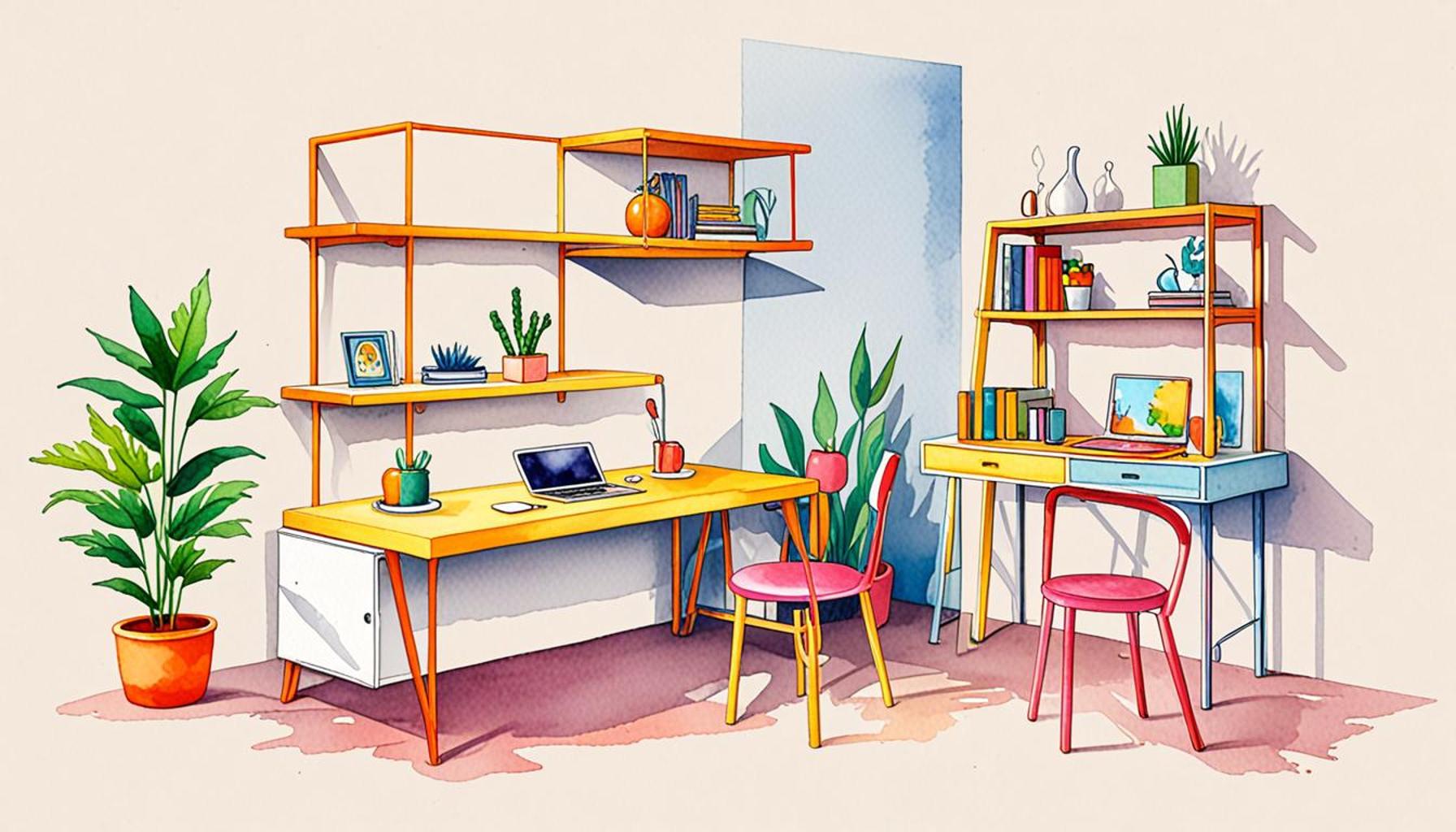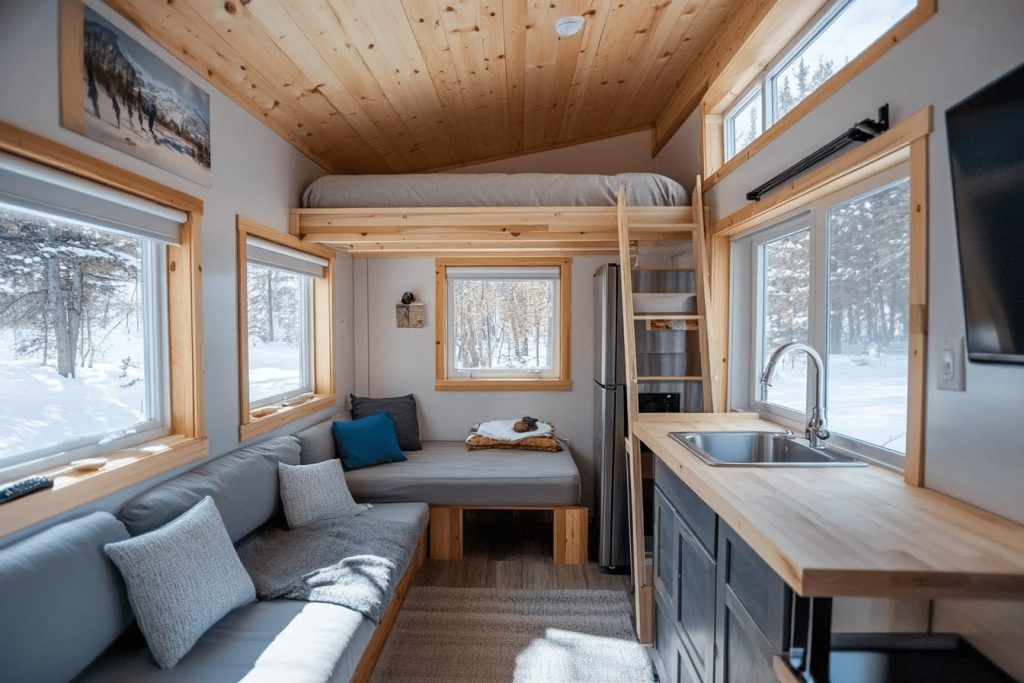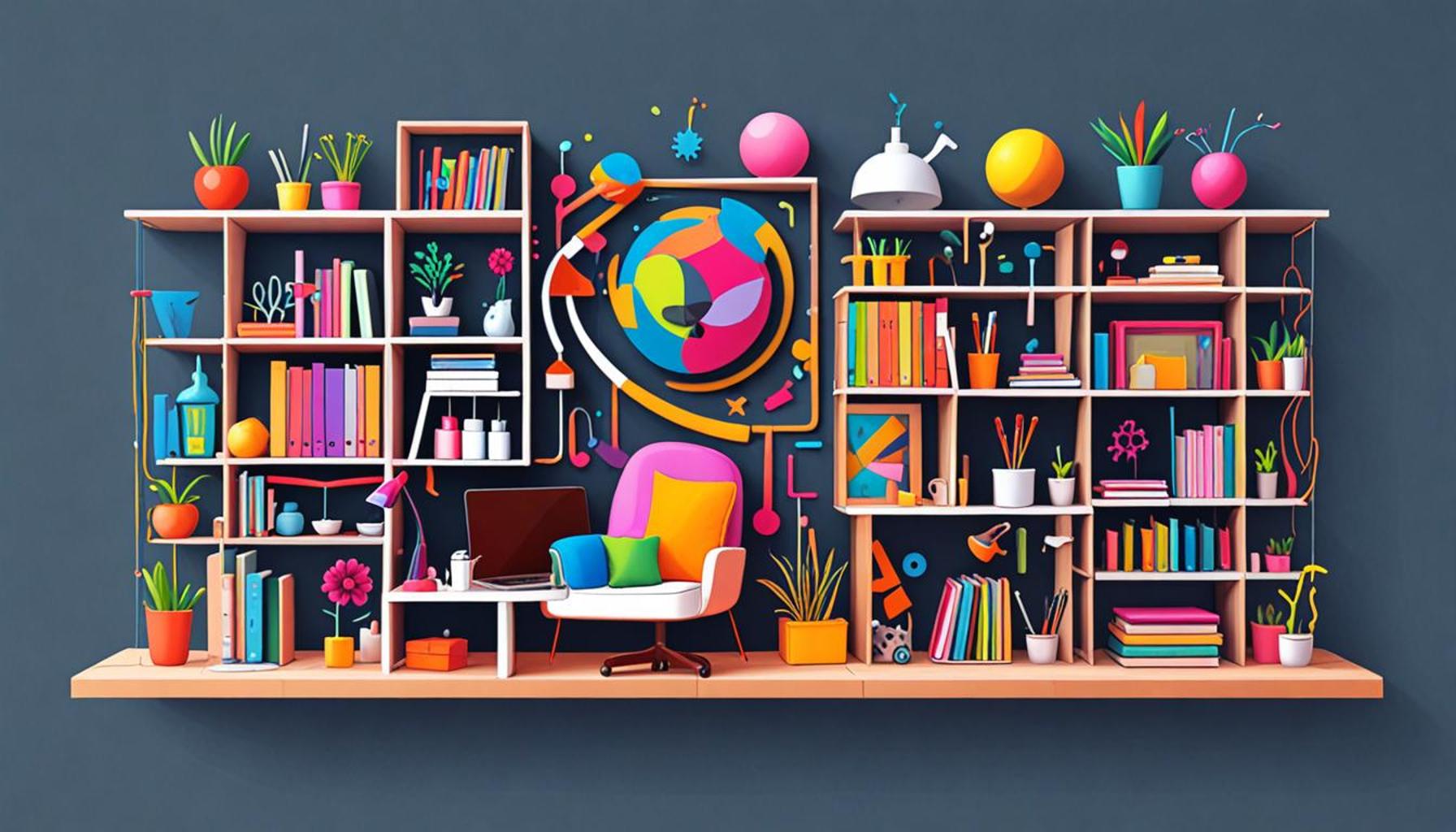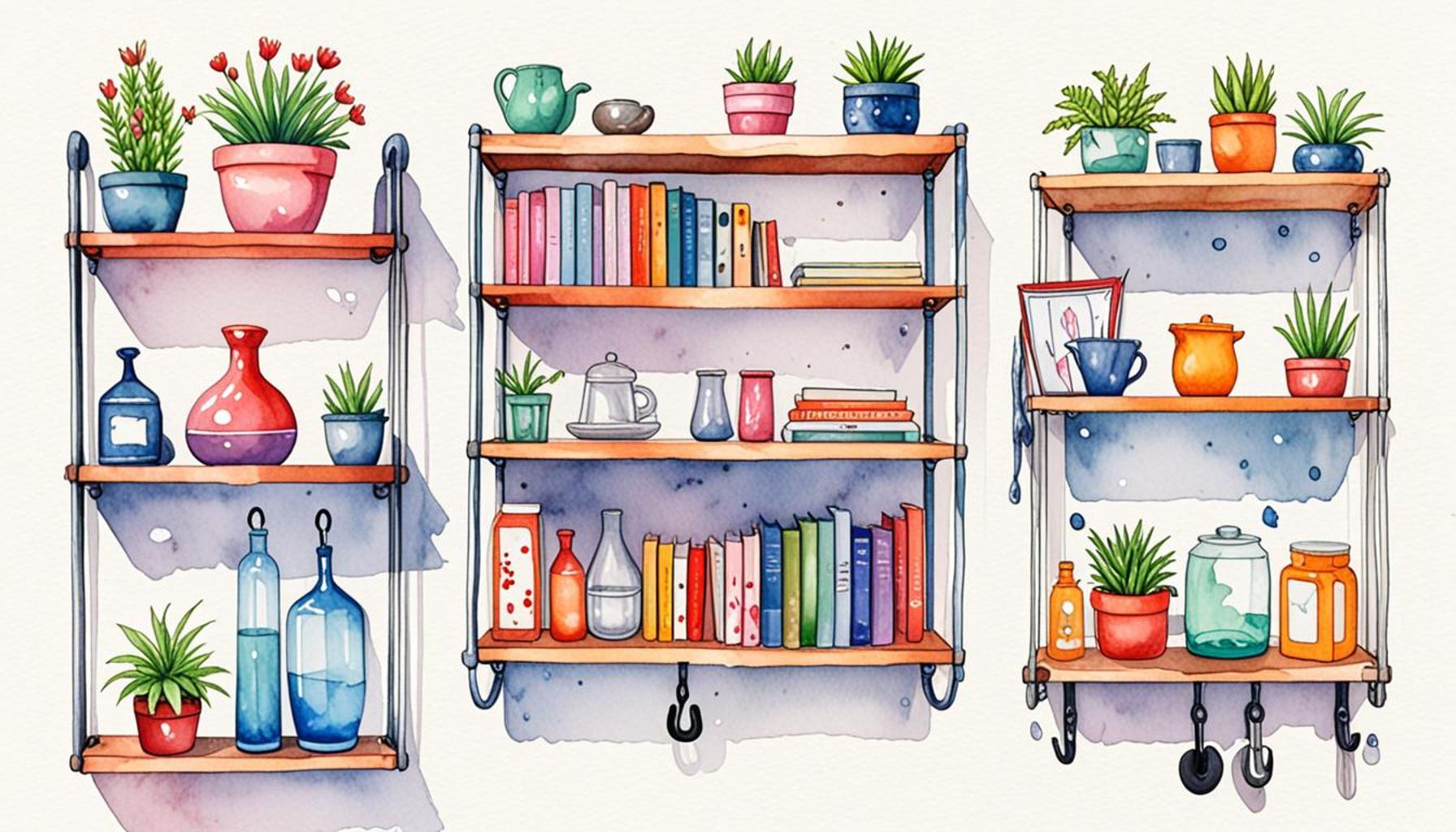Multifunctional Furniture: Creative Solutions for Space Optimization in Minimalist Environments

The Rise of Multifunctional Furniture
In recent years, urban living spaces have become smaller and more expensive, pushing many individuals and families to rethink their home environments. In this new reality, the demand for multifunctional furniture has dramatically surged. Not only do these cleverly designed pieces conserve precious square footage, but they also introduce unparalleled versatility, allowing homeowners to adapt their spaces to their evolving needs.
As minimalism gains traction, many decorators and homeowners are on the lookout for innovative solutions that maximize the utility of every room. For example, versatility is a core concept in multifunctional furniture. A prime illustration is the ubiquitous sofa bed, which seamlessly transitions from a comfortable couch for lounging during the day to a cozy bed for guests at night. Another noteworthy example is coffee tables that feature hidden compartments for storage, ideal for stowing away magazines or remote controls and keeping the space clutter-free.
- Space-saving designs: Innovations such as folding chairs and nesting tables have become staples in many homes. These compact pieces can easily be tucked away when not in use, allowing larger areas to remain open and airy.
- Integrated technology: Modern work-from-home setups increasingly require features like built-in charging stations and desk organizers. Designers are responding with desks that not only accommodate laptops but also provide USB ports and wireless charging pads, making it easier than ever to balance professional responsibilities with daily life.
Recent surveys indicate that nearly 70% of American households prioritize functionality in their furniture choices, highlighting a significant cultural shift. This illustrates a profound understanding that embracing smaller living spaces doesn’t equate to forgoing aesthetics or comfort. By utilizing creative solutions in design, individuals can foster serene atmospheres that are both stylish and practical.
From the bustling streets of New York City to quieter suburban neighborhoods, the incorporation of multifunctional furniture creates harmony in minimalist spaces while enhancing utility. As people increasingly seek to craft homes that reflect their lifestyles and values, they find themselves drawn to innovative furnishings that do more than just look good; they serve essential functions and cater to modern living. Explore the possibilities of multifunctional furniture and discover how it can transform your living space into an elegant and spacious retreat while effortlessly meeting all practical needs.
DISCOVER MORE: Click here to learn how minimalism can enhance your productivity

Innovative Designs for Dynamic Living
The world of multifunctional furniture has evolved into a treasure trove of innovative designs that cater to the unique challenges posed by compact living quarters. As more individuals embrace a minimalist lifestyle, the demand for furniture that serves multiple purposes has inspired a new wave of creativity among designers. This has led to the development of pieces that not only conserve space but also enhance the overall aesthetic of a home.
One of the standout trends in multifunctional furniture is the rise of modular designs. Modular furniture allows users to customize their configurations based on personal needs or the occasion. For example, sectional sofas can be rearranged to accommodate gatherings or be adjusted to provide a more intimate setting for smaller households. These adaptable pieces are ideal for those who frequently host friends or family but lack sufficient room for a traditional dining setup.
- Transformative tables: Dining tables that extend to accommodate more guests or can be converted into work desks are making waves in modern homes. This functionality is especially appealing for families who juggle dining, homework, and craft activities, all within the same space.
- Convertible storage units: With the increased need for effective organization in smaller environments, storage units that transform into different pieces, such as benches or side tables, are becoming essential. These stylish solutions help maintain a clutter-free environment without sacrificing practicality.
Additionally, the integration of sustainable materials into multifunctional furniture design is gaining traction. Many consumers are now prioritizing eco-friendly options that not only conserve space but also positively impact the environment. Furniture crafted from reclaimed wood or recycled materials offers both durability and a unique character that resonates with those who value sustainable living practices.
Data from recent trends reveals that eco-conscious consumers are increasingly willing to invest in sustainable multifunctional furniture, recognizing that quality pieces can provide long-term value. With nearly 60% of millennials expressing a preference for sustainable choices in their furniture purchases, companies are motivated to innovate and cater to the evolving demands of the market.
Another aspect to consider is how multifunctional furniture contributes to the overall mental well-being of individuals living in confined spaces. By maximizing the use of available area and creating functional yet inviting environments, these designs can significantly enhance the comfort and livability of homes. Well-designed, multifunctional spaces encourage mindfulness and a sense of relaxation, which is essential in today’s fast-paced world.
As the trend of minimalist living continues to gain momentum, the versatility and innovative features of multifunctional furniture not only meet the space optimization needs of homeowners but also elevate the overall design aesthetic. Explore these creative solutions to reimagine your living space and make the most of every square foot while celebrating your personal style.
| Advantage | Description |
|---|---|
| Space Efficiency | Multifunctional furniture maximizes usable area, ideal for small living conditions. |
| Cost-Effectiveness | By combining features, these pieces save on purchases and reduce clutter. |
| Design Flexibility | Available in various styles, they can adapt to personal aesthetics while maintaining functionality. |
| Environmental Impact | Less furniture means reduced material consumption, contributing to sustainability. |
In minimalist environments, the integration of multifunctional furniture not only enhances space optimization but also resonates with trends towards sustainability and efficient living. The ability to convert a sofa into a bed or a coffee table into a work desk exemplifies innovation catering to modern lifestyles. This approach ensures that every piece serves multiple purposes, thereby facilitating a seamless transition between works and leisure—all while keeping design aesthetics in mind. Moreover, as urban spaces grow more compact, the demand for such intelligent solution-oriented furniture continues to rise, making it a vital consideration for those looking to enrich their living space without compromising on style or function. Exploring these options can lead one to discover a wealth of ideas that cater to both personal comfort and environmental responsibility.
DISCOVER MORE: Click here to simplify your daily life
Smart Solutions for a Seamless Lifestyle
In addition to the aesthetic and functional advantages of multifunctional furniture, technology now plays a pivotal role in shaping the designs we see today. The incorporation of smart technology into furniture allows for an unparalleled user experience, enabling residents to fully utilize their limited space. From integrated charging stations to voice-activated controls, smart furniture transcends traditional boundaries and creates dynamic spaces ready for the demands of contemporary living.
One of the most exciting developments is the rise of smart sofas, equipped with USB ports and built-in speakers. These sofas cater to the modern individual’s need for connectivity, allowing them to enjoy entertainment while optimizing their living area. Imagine a cozy evening spent on a sofa that seamlessly converts to a sleeping area for unexpected guests, all while keeping devices charged and conveniently at hand. This blend of technology and practical design elevates the multifunctional concept and aligns with the digital lifestyle of today’s homeowners.
- Integrated workspaces: As remote work becomes more commonplace, the demand for dedicated workspaces within homes has surged. Furniture pieces that transform into desks, complete with built-in organization features and power outlets, enable a productive workspace to be established in even the smallest of corners, ensuring minimal distraction and maximum efficiency.
- Expandable furniture with technology: Tables and desks that seamlessly adjust in height or expand in size with the push of a button exemplify how technology enhances functionality. Homeowners can personalize their environments to cater to different activities, such as working, eating, or entertaining.
Perhaps even more intriguing is how multifunctional furniture is tailored to meet different demographics. Stylish solutions cater to the needs of young professionals migrating to urban areas looking for practicality, as well as families who require flexibility in their living spaces. According to recent surveys, nearly 70% of young adults prefer flexible furniture that can adapt to their evolving lifestyles, particularly in urban settings where mobility is key.
Another noteworthy aspect of multifunctional furniture is its potential to enhance social interactions. Furniture can be designed to facilitate conversations and gatherings, incorporating seating arrangements that encourage connection. For instance, nesting tables that can be easily rearranged invite casual conversation and a communal atmosphere, perfect for small get-togethers where space is at a premium. Additionally, foldable chairs offer both versatility and ease of storage, allowing homeowners to quickly adapt their living spaces to accommodate varying social scenarios.
Furthermore, as consumers become more conscious of their environmental footprint, the idea of upcycling existing furniture to create multifunctional pieces is becoming increasingly popular. This trend not only underscores sustainability but also allows individuals to showcase their creativity and DIY skills. Communities across the United States are hosting workshops aimed at teaching people how to refurbish old furniture into practical, multifunctional designs, creating a sense of belonging and shared purpose.
As we navigate the dynamics of modern living, the role of multifunctional furniture continues to expand, reflecting both innovations in design and the shifting cultural landscape. By embracing these creative solutions, individuals can transform their minimalist environments into spaces that are not only visually appealing but also highly functional and tailored to their unique lifestyles.
DISCOVER MORE: Click here to enhance your space
Conclusion: Embracing the Future of Space Efficiency
In conclusion, the evolution of multifunctional furniture plays a crucial role in addressing the challenges of modern living, particularly within the constraints of minimalist environments. As urbanization continues to grow and living spaces shrink, adopting versatile furniture solutions becomes imperative. The blend of aesthetics, functionality, and technology in contemporary designs enhances the user experience, catering to diverse needs and lifestyles.
The innovative applications of smart technology in furniture design not only optimize space but also encourage a seamless integration into our daily lives. From adaptive workspaces that benefit remote professionals to expandable dining sets perfect for entertaining guests, these pieces offer dynamic solutions for fluctuating needs. Moreover, with approximately 70% of young adults favoring adaptable furniture that caters to their evolving lifestyles, the demand for multifunctionality is only set to rise.
As we become increasingly aware of our environmental impact, the movement towards upcycling and sustainable design further underscores the importance of practical and eco-friendly multifunctional furniture. By reframing how we view our living spaces, we can encourage a lifestyle that values simplicity while fostering creativity and community connection.
Ultimately, embracing multifunctional furniture allows individuals to transform limited spaces into personalized sanctuaries that reflect their unique needs and aspirations. The future of home design lies in our ability to redefine and optimize our environments, proving that, with creativity and innovation, even the smallest of spaces can be fully utilized and enjoyed.


